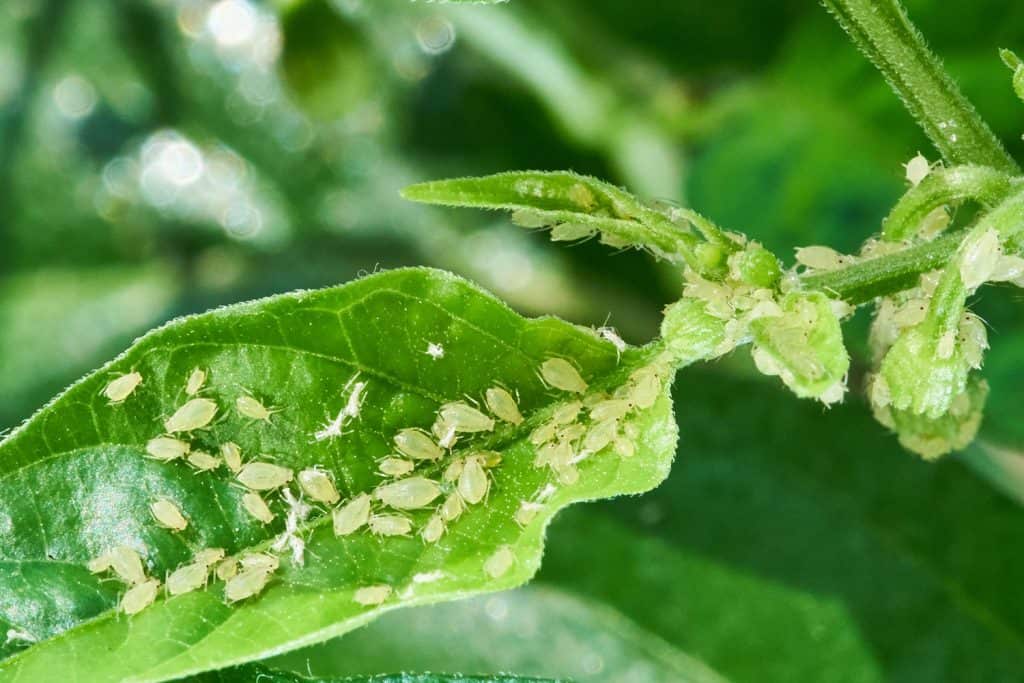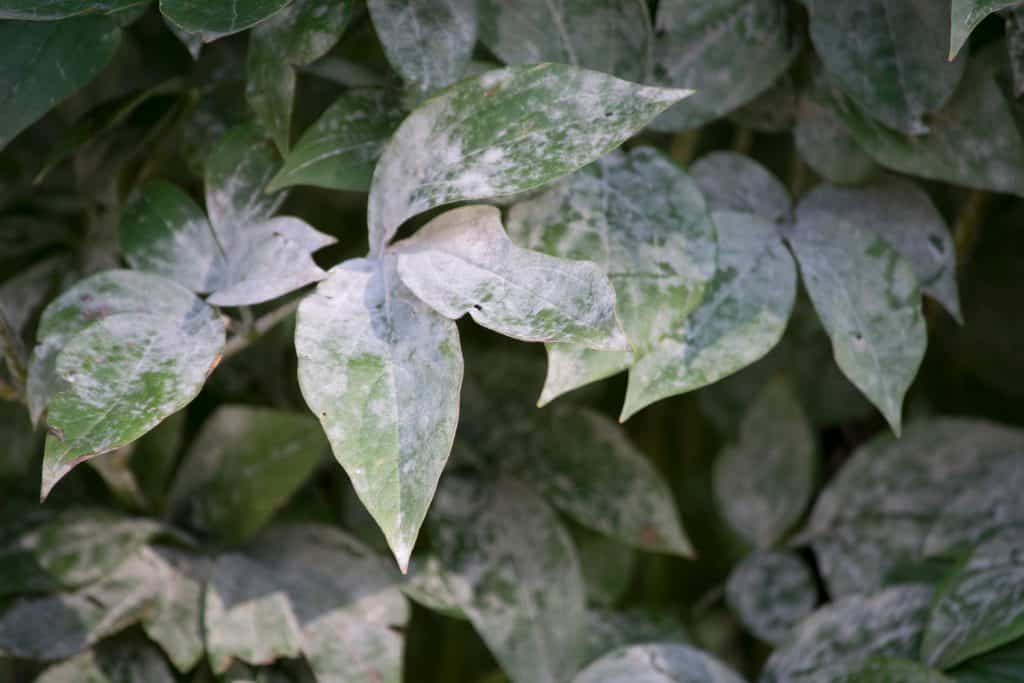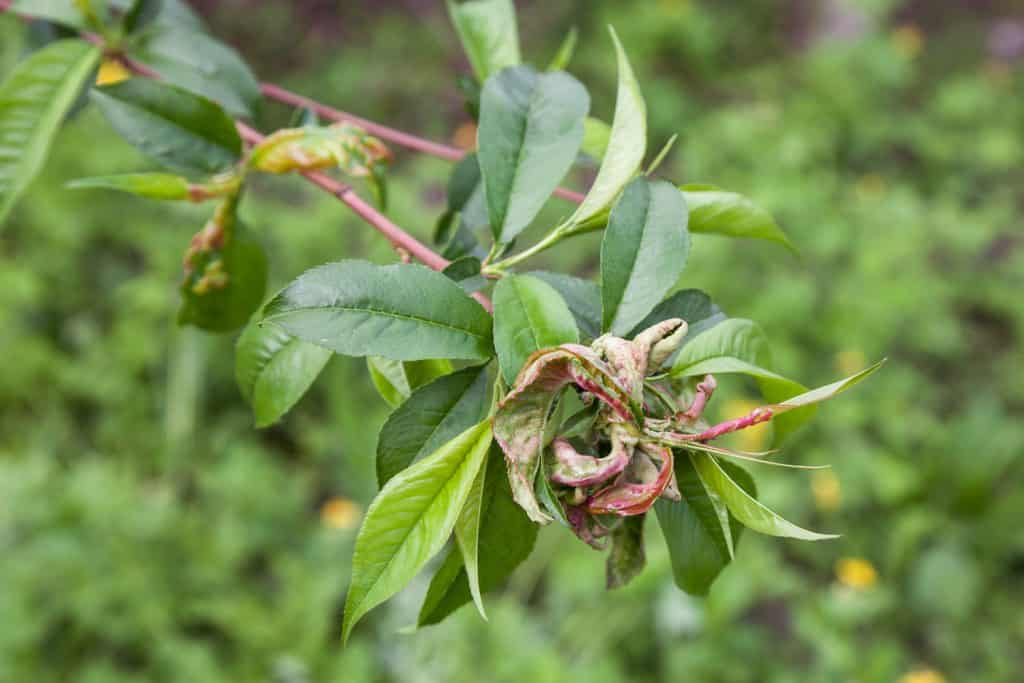Dogwood trees are a favorite for many people due to their beautiful blooms and hardiness. That's why it raises concerns whenever the tree starts doing anything strange, like the leaves curling or cupping for instance. So why do dogwood leaves curl and cup, and is it a cause for concern? We've done the work to bring you the answer.
Leaves curling and cupping usually isn't a huge problem, but it could be caused by a few things. Here are some common issues you should look for and treat:
- Aphids
- Powdery mildew
- Leaf scorch
Usually, these things don't cause serious problems as long as you catch them early. In this article, we'll tell you specifically what to look for if your dogwood leaves start cupping and curling and how to treat any potential problems. Continue reading to learn more.

Contents
Common Causes Of Leaf Cupping and Curling
If you've noticed that your dogwood leaves are cupping and curling, it's usually not a major cause for concern. The large issue at hand is that the leaves are stressed in some way, whether that be insects, disease, or other environmental factors. Here are the 3 most common causes and how to treat them.
Aphids

Aphids are small insects that feed on the sap of plants, especially those that are found in your yard. The insects feed in groups on the undersides of leaves by sucking the sap directly from the leaves. This can cause the leaves to curl up, change color, and may even cause them to fall off.
When aphids feed on the leaves and release the sticky sap, it can attract larger insects like ants. The ants also feed on the sap and help to protect the aphids in the process. Aphids can also transmit diseases between plants, which can cause larger problems in the future.
Upon noticing that the leaves on your dogwood tree have started to curl up, one of your first steps should be to look for these tiny green insects on the underside of the leaves. If you do spot them, treating them properly and promptly can help prevent further damage.
How To Get Rid Of Aphids
There are several methods you can try to get rid of aphids. One of the most effective methods is to apply an insecticide or horticultural oil to the dogwood tree. Just follow the instructions on the package. However, if you prefer a more natural method for removing aphids, you can also try:
- Hosing down the leaves daily with cold water until the bugs are gone.
- Spraying the leaves with water with a few drops of dish soap mixed in every 2 to 3 days for a couple of weeks.
If the dogwood tree is still affected, you can also try dusting the leaves with flour. The aphids will eat the flour and die. Sprinkling diatomaceous earth on the tree is also effective, but you shouldn't use it if the tree is in bloom. Diatomaceous earth won't harm the tree, but it is harmful to bees and other insects that pollinate the blooms.
Powdery Mildew

If aphids aren't the cause of your problem, the next thing you should check for is powdery mildew. Powdery mildew is a white, powdery substance that coats the leaves and is a common reason for leaves cupping and turning yellow or brown. It's a type of plant fungus, but it usually doesn't kill dogwood trees. However, you should treat it so that it doesn't spread to other plants.
How To Treat Powdery Mildew
Powdery mildew is often caused by overcrowded plants, where air can't circulate properly around the tree canopy. The first thing you should try is to open up the canopy some by trimming away crowded branches. This will allow air to circulate better among the branches.
If thinning out the canopy doesn't work, the next best option is to spray the tree with a fungicide or neem oil. Follow the instructions on the packaging as far as how to apply it and how much to choose. Treat the tree once a week until the powdery mildew fungus is gone.
Leaf Scorch
If there doesn't appear to be any indicators of aphids of powdery mildew, leaf scorch is likely the reason that the leaves of your dogwood tree are curling and changing colors. Leaf scorch isn't a disease. Instead, it usually happens during the summer and could be caused by one or several environmental factors, including:
- Too much sun
- Not enough water
- Drying winds
- Inadequate soil
Unfortunately, there's not a lot you can do to prevent some of these problems from happening. However, there are some adjustments that you can make as far as how you care for your dogwood tree in order to prevent leaf scorch.
1. Offer More Shade
Dogwood trees thrive in full sun, but the hot afternoon sun can be too intense for young trees. If your dogwood tree is still small, you could try moving it to a location near a larger tree. A large tree can offer some afternoon shade to protect the leaves from the sun's rays. If the tree is large and can't be moved, try wrapping the trunk during the summer to reflect sunlight away from the tree.
2. Provide More Water
Rainfall can be inconsistent from year to year. Even if it does rain a lot, excessive temperatures can cause water to be used more quickly. Dry winds can also cause leaves to become scorched. A couple of times a week, try giving your tree more water during the day. This can be in the form of a sprinkler system, or can simply run a hose to the tree and let water trickle around the base for about 30 minutes.
3. Modify The Soil
Another cause of leaf scorch could be that the soil isn't retaining water as well as it should, or contains high amounts of salt. One way to remedy this is to add gypsum to the soil. Gypsum provides many benefits for the soil, including allowing it to soak up more water, lowering the amount of salt in the soil, and adding beneficial nutrients like sulfur and calcium.
If you think your soil could be the reason for leaf scorch, get a soil test to check the salinity before you add gypsum. If you find that this is indeed the problem, sprinkle the gypsum around the base of the tree. Or you can add it to a lawn sprayer to cover a larger area.
Why Are My Dogwood Leaves Curling Up?

Dogwood leaves curl up as a sign of being stressed. If leaves aren't diseased and there is no evidence of insects, the heat from the sun is the most common stressor. Leaves curl up as a way to protect themselves from receiving too much sun.
Leaf curling is most common in young trees that are less than 5 years old. As trees get older, they become more acclimated to their environment and become less stressed. But, leaf curling can affect older trees as well.
How Do I Know If My Dogwood Tree Is Dying?
Dogwood trees are pretty hardy, but they aren't immune to dying. Sometimes, one branch can die, but it doesn't mean that the whole tree will die. But if the trunk shows signs of decline, it's possible that the whole tree could die.
Check the bark on the trunk and around the base of the tree. Peeling bark could be a sign that your tree is dying. But if there is a ring of missing bark at the bottom of the trunk, or the bark is dry and brittle instead of moist, the tree is likely already dead.
How Do You Revive A Dogwood Tree?
Unless the tree is already dead, it's very likely that you can revive the tree before it dies completely. Some specific issues that could be affecting your tree are leaf spots, powdery mildew, root rot, scale, or borer insects. The key to reviving the tree is figuring out what exactly is causing damage and treating it accordingly with fungicides or insecticides. If you're unsure, reach out to your local extension office for help.
How Do You Save A Stressed Dogwood Tree?
Dogwood trees are pretty resilient, so if your tree is stressed, try not to become stressed yourself. Usually, this is an easy fix. First, you will need to identify the source of the problem. Look for evidence of aphids or powdery mildew. If you can't find any, environmental factors are the most likely concern. Try the suggestions listed above if you think the leaves are getting too much sun, not enough water, or have poor soil.
In Closing
We hope this guide provided you with helpful solutions for figuring out the source of your dogwood leaves cupping or curling and how to treat them. Environmental stressors are the most common cause, but insects or fungus could also cause damage. Treating the tree quickly should fix the problem before too much damage is done. Thanks for reading!
To learn more about dogwood trees, check out the following:

I have a Cherokee chief planted in zone 5 (northeast Missouri) that I planted this summer that started to have curling leaves about a month ago but at the same time it also had new buds shooting out. No aphids or powdery mildew and we did have a hot, dry summer so betting it was just the heat that got to it. I water it generously but it seems the leaves are getting worse everyday.